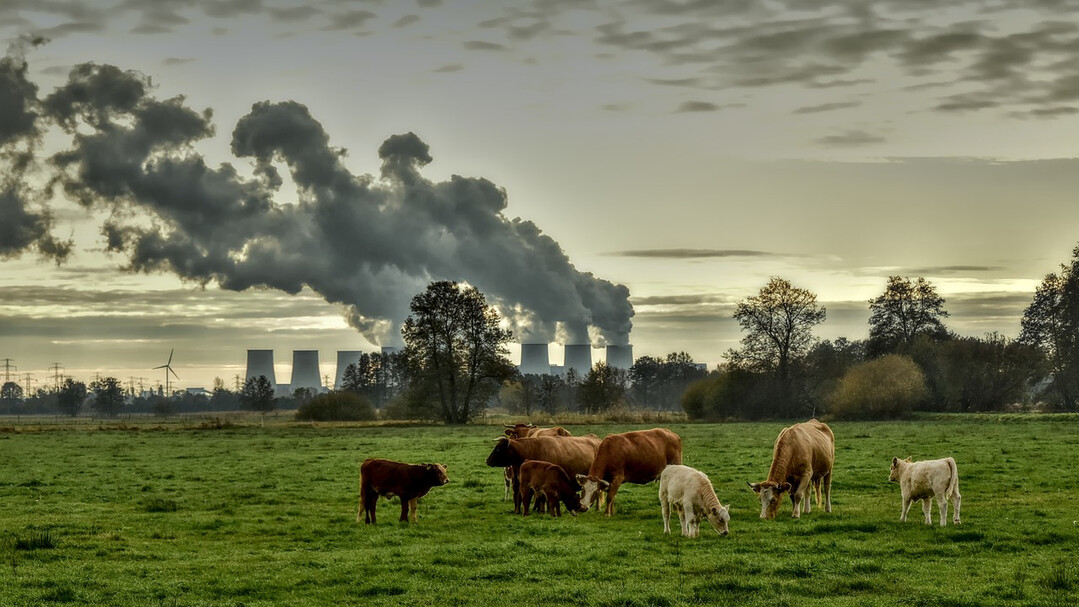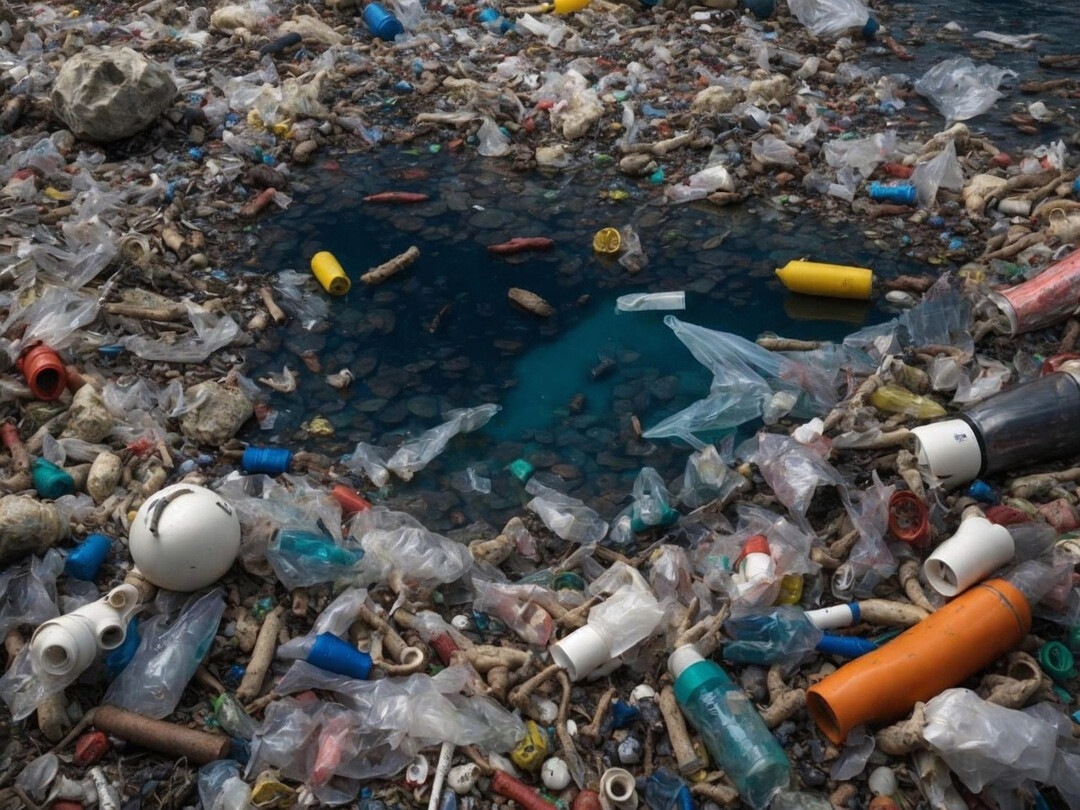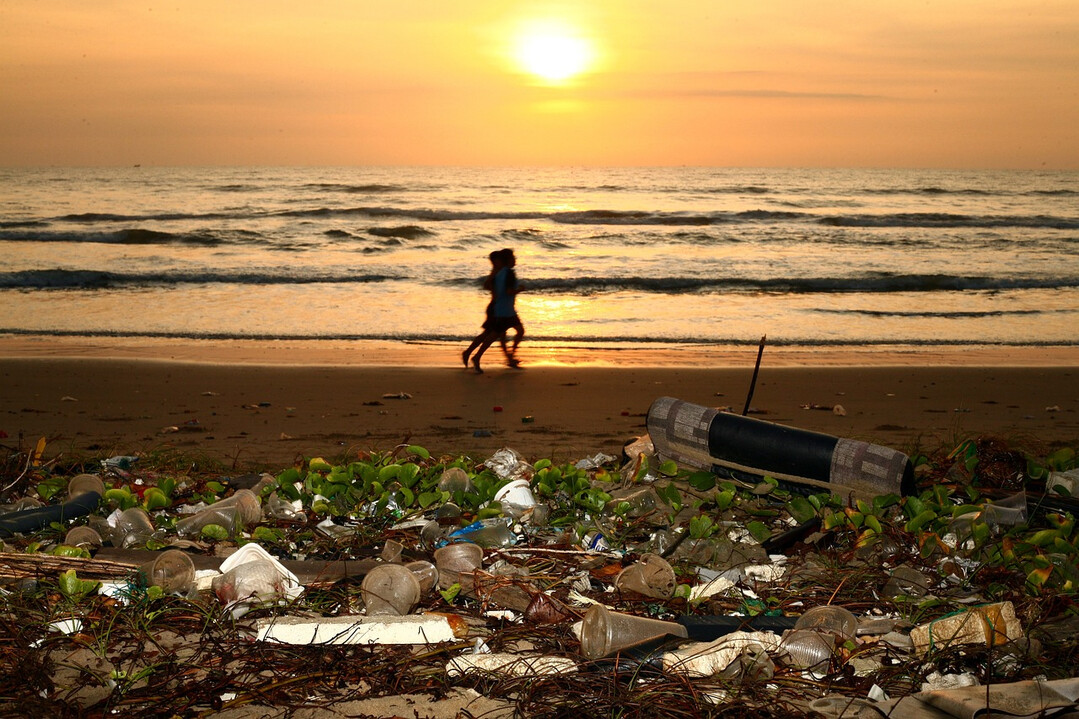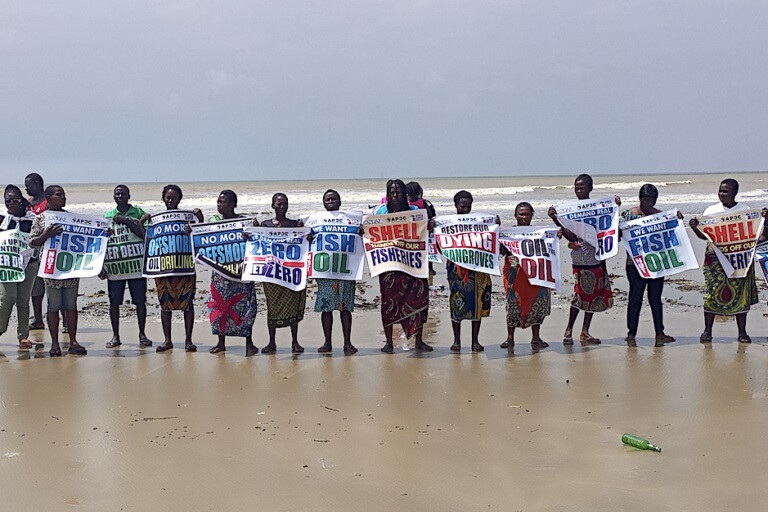
Across continents, scars etched deep into the Earth's surface mark "sacrifice zones"—regions devastated by fossil fuels and other industries, often under the guise of progress, leaving behind shattered ecosystems and livelihoods. Here, vast corporations and multinationals contaminate rivers, darken skies, and desiccate the soil. The price of development is paid in human suffering and ecological ruin.
What binds these "sacrifice zones" together is a common narrative: the prosperity of a few built upon the suffering of many, and the relentless struggle of communities to heal the wounds inflicted upon their lands, their health, and their dignity.
This article presents four case studies showcasing the experiences of communities and civil society organizations working with the Community Resource Exchange of the Coalition for Human Rights in Development.
Tula, Mexico: A Struggle to Defend a Poisoned River
The Tula-Tepeji-Apaxco region of Mexico, once a fertile plain of the Toltec civilization boasting rich biodiversity and cultural heritage, is now a landscape marred by severe water and air pollution. In 1975 and 2005, the United Nations designated this devastated area "one of the most polluted places on Earth," highlighting an environmental catastrophe. The early 20th century saw a complete transformation of the region with the establishment of cement plants, oil refineries, chemical factories, coal-fired power plants, and lime kilns. Under government auspices, these industries decimated the local ecological balance, contaminating water, air, and soil with toxic waste, severely impacting the health of its inhabitants.
Major polluting entities include giant cement companies such as Holcim, CEMEX, Cementos Fortaleza, and Clarimex, whose operations release harmful gases that exacerbate the region’s environmental and public health crisis. At the heart of this environmental disaster lies the Tula River, which receives 150,000 liters (approximately 40,000 gallons) of untreated wastewater per second from Mexico City and the Valley of Mexico. Laden with industrial discharge, hospital waste, and sewage, this "black water" overwhelms the river and its tributaries.
The Endhó Dam, originally built to support local agriculture, has become a toxic dumping ground, poisoning the wells upon which thousands of residents rely. Despite decades of warnings, local and federal authorities have neglected this pollution. The contaminated water has killed fish, coated the land with toxic sludge, and led to a surge in cancers, leukemia, respiratory illnesses, and gastrointestinal diseases among the 15,000 people living along the riverbanks. The devastating floods linked to the Tula River in 2021, which resulted in 17 deaths and displaced thousands, starkly illustrated the ongoing dangers of governmental inaction.
The region now faces a critical public health crisis, and while the recent declaration by the Ministry of Environment and Natural Resources to designate the area for ecological restoration is a necessary step, many believe it is too late. This designation includes municipalities such as Atitalaquia, Tepeji del Río, Tepetitlán, and Tlahuelilpan, where 498 establishments have been identified as hazardous waste generators, 14 of which are hydrocarbon producers. The study, based on water, air, and soil analyses, could mark the beginning of recovery if implemented urgently and earnestly.
For years, organizations like the "Queremos Vivir" (We Want to Live) Network for Environmental Awareness have resisted this destruction, working to expose the devastation and fight against deforestation and continued pollution. One of the leaders of "Queremos Vivir" stated, "Legal solutions are urgent. We believe there is still a way to reverse this, and we have time to show the newly elected President Claudia Sheinbaum the critical situation we are in." Their demands include reducing the flow of the Tula River through comprehensive water management solutions, holding the government accountable for decades of environmental neglect, and demanding reparations for industrial pollution and the catastrophic 2021 floods.
While they welcome President Sheinbaum's promises of river cleanup and circular economy projects, they emphasize that meaningful environmental justice cannot be delayed any longer. After conveying the community's demands with tears in her eyes, the "Queremos Vivir" leader asked with desperation, "Are we really destined to be a sacrifice zone? Is the damage so profound, the environmental destruction we face so severe, that if we don’t protect and defend ourselves, what will become of us?“

Antofagasta, Chile: Indigenous Changos Suffer in the Shadow of a Green Transition
The Antofagasta region in northern Chile stands as another stark example of a sacrifice zone, where industrial activities have devastated the environment and the health of local communities, particularly the Indigenous Chango people. Known as the "People of the Mist" for their ancient tradition of navigating the seas in the fog, the Changos have witnessed their coastal territory being encroached upon by coal-fired power plants, mining operations, desalination projects, industrial fishing, and, more recently, renewable energy mega-projects.
The region’s so-called "transition to clean energy" has brought wind farms, solar panel arrays, and green hydrogen initiatives spearheaded by companies like the French-owned Engie and Électricité de France (EDF), Colbún, and the Chilean state-owned mining company CODELCO. Companies like Cermaq Chile contaminate the seabed through industrial salmon farming, threatening the marine ecosystem that sustains the Changos.
While these projects are touted as sustainable, the Changos argue that they often replicate the same predatory logic that has ravaged the region for decades, frequently implemented without genuine consultation or respect for their rights. A resident of the Chango community recalls how the community never imagined so many industries would occupy their territory and that they were never consulted about these plans or their potential environmental impacts. "In November, we had the tradition of going to the hills to cut lilies to offer to our deceased loved ones. Now, because of the thermoelectric plants, everything is dry, there is nothing," he lamented.
The Changos have voiced concerns about the cumulative impacts of these developments on their culture, health, and environment. Industrial activities continue to destroy sacred archaeological sites, ancestral burial grounds, and the habitat of endangered species like Markham’s storm petrel (Hydrobates markhami), whose nesting sites are increasingly threatened by poorly planned renewable energy infrastructure. Meanwhile, pollution from mining waste and industrial discharge has led to increased rates of cancer, respiratory illnesses, and other diseases, exacerbated by insufficient environmental oversight. Reports indicate that there is an alarmingly small number of environmental inspectors for this vast region.
A recent example of resistance is the Colbún’s $1.4 billion Central de Bombeo Paposo energy storage project. While promoted as a key component of Latin America’s green transition, the Changos and allied organizations successfully halted the project due to its failure to meet environmental requirements. This was a rare victory against relentless industrial expansion. However, the community remains vigilant, knowing that these projects often reappear with minor modifications.
The destruction of marine and coastal resources, central to Chango culture and survival, has placed immense stress on the community. Despite their official recognition as Indigenous people in 2020, the Changos' semi-nomadic way of life clashes with rigid state consultation frameworks that do not account for their movement along the coast. This exclusion not only violates their rights but also erases their cultural identity and historical presence.
As guardians of their territory, the Changos insist that the industrial model in Antofagasta, whether driven by mining, energy, or fishing, must change. If renewable energy projects are implemented without genuine respect for Indigenous rights, ecological safeguards, and cultural preservation, the "green transition" risks perpetuating the injustices they have endured for generations. Reflecting on future generations, one community member stated, "We want our grandchildren, great-grandchildren, and their descendants to know that we did not sit idly by, that we fought for the legacy of our ancestors."

Odimodi, Nigeria: Lives Devastated by Oil Pollution
The Niger Delta region stands as one of the most polluted areas globally due to decades of environmental destruction caused by oil companies. Key entities responsible include the Shell Petroleum Development Company of Nigeria (SPDC), its UK-based parent company Shell plc, the Nigerian National Petroleum Corporation (NNPC), France’s TotalEnergies, and the Nigerian Agip Oil Company, a subsidiary of Italy’s ENI. Through crude oil spills, the discharge of toxic wastewater, and gas flaring, these corporations have decimated the livelihoods of communities like Odimodi, home to approximately 5,000 residents.
The oil spill in Odimodi in August 2022 is a typical example of the decades-long environmental crisis, leading to significant habitat destruction and the loss of fishing and farming, the community's lifeline. Waterways remain severely contaminated, forcing fishermen to venture further into the sea in search of dwindling catches, often at great personal risk. Illustrating their helplessness, one community member lamented, “The fish we now eat smells of crude oil from its guts and gills. Most times, we just eat it because we have no other option.”
Women bear the brunt of this ecological disaster, facing heightened poverty and systematic exclusion from decision-making processes aimed at addressing the crisis. Despite these hardships, oil companies often employ a “divide and rule” strategy, using monetary incentives to undermine community solidarity and hinder meaningful action.
The impact of these spills extends far beyond immediate economic losses. Odimodi residents lack access to clean water, and farmlands have become infertile, plunging the community deeper into poverty. Prolonged exposure to the polluted environment has also led to deteriorating health conditions. One resident testified, “We have many cases of asthma due to the inhalation of crude oil. We also have skin diseases and miscarriages. This is documented evidence you can find at the local health center.”
Meanwhile, Shell and its Nigerian subsidiary, which have operated in the region since the 1950s, are attempting to divest their onshore oil assets without adequately addressing the severe environmental damage they have caused. This is a recurring strategy to evade responsibility, leaving behind rusted pipelines, leaking infrastructure, and contaminated land.
Grassroots organizations such as the Community Development Advocacy Foundation (CODAF) and Environmental Rights Action/Friends of the Earth Nigeria (ERA/FoEN) are actively supporting communities like Odimodi by providing legal counsel and amplifying their voices in the pursuit of justice. While the Nigerian Supreme Court recently allowed Shell’s asset sale, advocates are demanding that Shell fully remediate the land and waterways and compensate affected residents before their departure.
The plight of Odimodi is emblematic of the profound inequalities and systemic failures perpetuated by multinational oil corporations and lax regulatory frameworks. As one CODAF activist states, “The government that is supposed to regulate these oil industry activities has turned a blind eye and a deaf ear to the situation… The oil industry pays the bills of the regulatory agencies.” In this way, vulnerable communities are left to bear the devastating costs.

Pangkalan Susu, Indonesia: A Coastal Community Groans Under the Shadow of a Coal Plant
Pangkalan Susu, a coastal district in North Sumatra, Indonesia, was once a vibrant area blessed with rich fishing grounds, fertile agricultural land, and lush mangrove forests. However, the construction of the massive Pangkalan Susu coal-fired power plant has transformed this once-peaceful fishing village into a “sacrifice zone” grappling with severe environmental pollution, social conflict, and economic hardship.
At the heart of the issue is the Pangkalan Susu power plant, commissioned by Indonesia’s state electricity company PLN and built through a joint venture involving Chinese firms Guangdong Power Engineering Corporation and Sinohydro, along with Indonesian company PT Nusantara Energi Mandiri. The project was heavily financed by loans from the Export-Import Bank of China, with several coal suppliers in Indonesian Borneo and Sumatra reaping substantial profits from the plant’s operations.
The plant’s operation has devastated the local ecosystem and the livelihoods of its residents. Coal ash, often released covertly at night, pollutes the air and water without filtration, rendering land barren and reducing crop yields by up to 75%. Fishermen, once thriving in traditional fishing grounds, are now chased away by armed security personnel, facing dwindling catches and the perilous journey to deeper waters with inadequate equipment.
Furthermore, there has been a noticeable surge in respiratory illnesses and cancer rates, prompting many residents to abandon their agricultural lands and traditional way of life in search of work in other regions or cities.
The challenges faced by the people of Pangkalan Susu extend beyond mere environmental pollution. Security forces linked to the power plant have violently suppressed protests, and whistleblowers face dismissal and even more severe threats. Amid this climate of fear, the Srikandi Lestari Foundation, a women-led civil society organization, continues its relentless pursuit of truth and accountability. A foundation representative recounted, “A member of our foundation, while gathering evidence for a report on illegal practices to be submitted to the UN, was hit by a car and suffered severe leg injuries,” emphasizing their unwavering commitment to campaigning for the plant’s closure and responsible action from the involved companies and government.
Meanwhile, the power plant’s promises of sustainable energy transition ring hollow. Attempts such as converting coal to synthetic liquid gas are seen as superficial ploys to improve their image as “clean energy” without addressing the ongoing severe environmental and health issues. Moreover, these problems are exacerbated within the context of Indonesia’s national energy strategy. A prime example is the Sarulla geothermal power plant, which has been criticized for excessively drawing water needed for its operations, desiccating nearby villages, and forcibly displacing the indigenous Toba Batak people, labeling their ancestral lands as “cursed” to justify development.
Amid this despair, the resilience of the Pangkalan Susu community shines through. With the support of the Srikandi Lestari Foundation, local women are leveraging the abundant mangrove resources to create and sell traditional snacks and delicacies, forging new livelihoods and reconnecting with the forest. This serves as a symbolic representation of the quiet resistance of residents who steadfastly preserve their traditional culture even in a harsh environment.
The stories of Pangkalan Susu and Sarulla starkly illustrate how large-scale industrial energy projects not only extract resources but also strip away the very essence of local communities, leading to environmental devastation, social fragmentation, and cultural loss. Without meaningful intervention, these “sacrifice zones” will remain poignant testaments to the human and environmental costs of unchecked development.

Solidarity and Resistance in the World's "Sacrifice Zones"
The stories of Tula in Mexico, Antofagasta in Chile, Odimodi in Nigeria, and Pangkalan Susu in Indonesia are far from isolated incidents. They are part of a vast tapestry of voices from countless “sacrifice zones” around the world, suffering under the shadow of industrial progress. What unites their struggles is not only the systemic exploitation they endure but also the tenacious spirit of resistance and solidarity in their fight back.
Dismantling these “sacrifice zones” requires governments and corporations to prioritize people over profit, establish robust environmental safeguards, and respect the rights and autonomy of affected communities. This must be coupled with a fundamental shift in development financing systems to ensure that projects contribute to the well-being of people and the planet, rather than the interests of specific corporations.
The fight for environmental justice is not merely a struggle to protect land, air, and water; it is a fight to reclaim a future stolen by greed and negligence. The courage and perseverance of the people of Tula, Antofagasta, Odimodi, and Pangkalan Susu offer a beacon of hope to communities in “sacrifice zones” worldwide, empowering them to take control of their own development.
[Copyright (c) Global Economic Times. All Rights Reserved.]






























